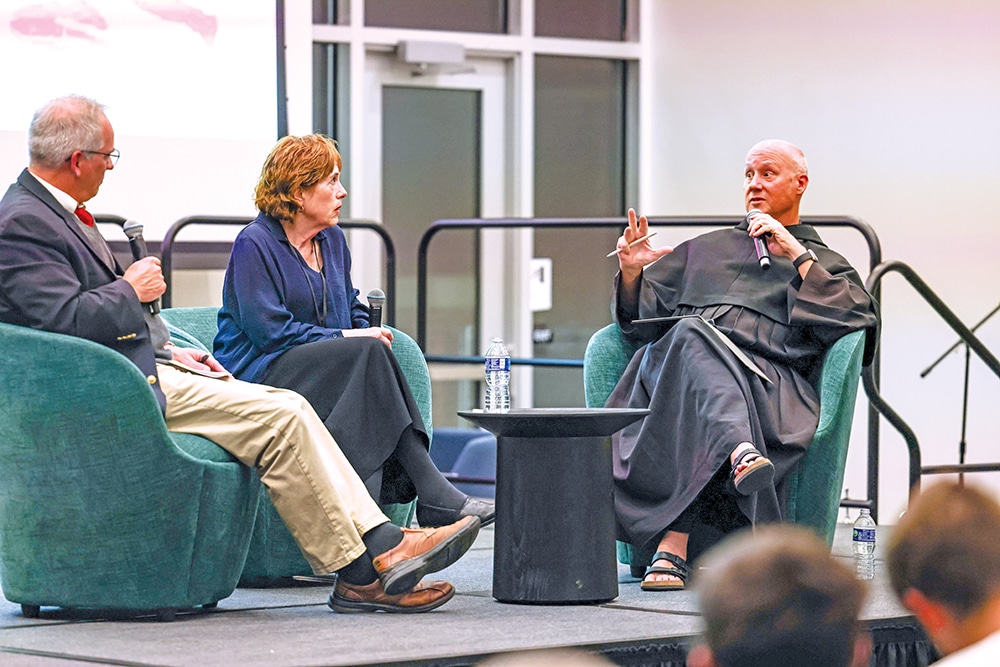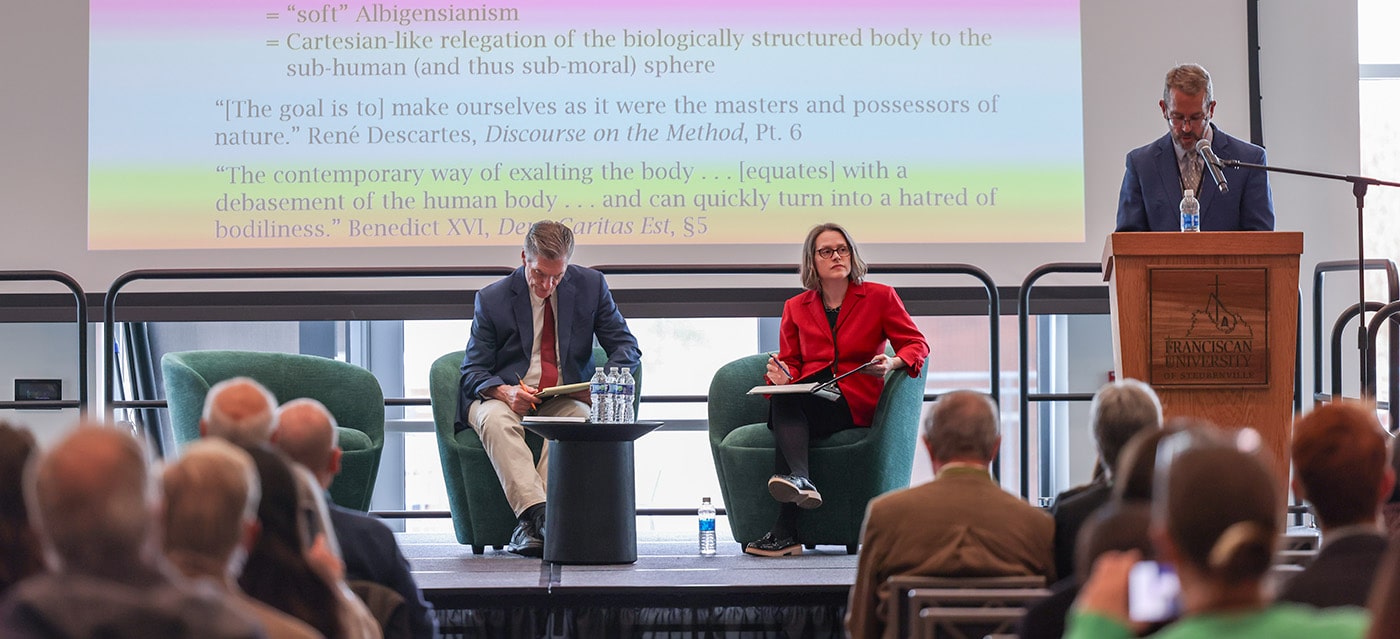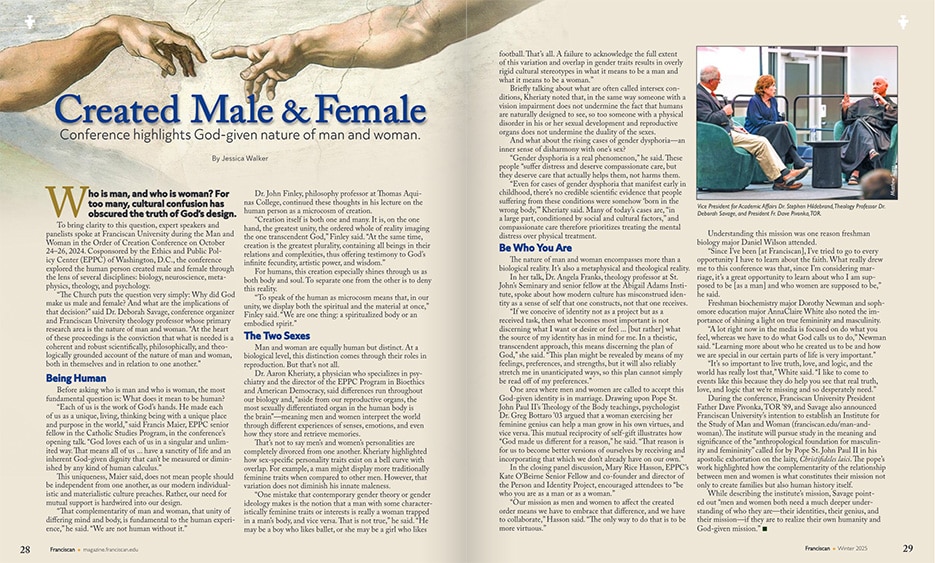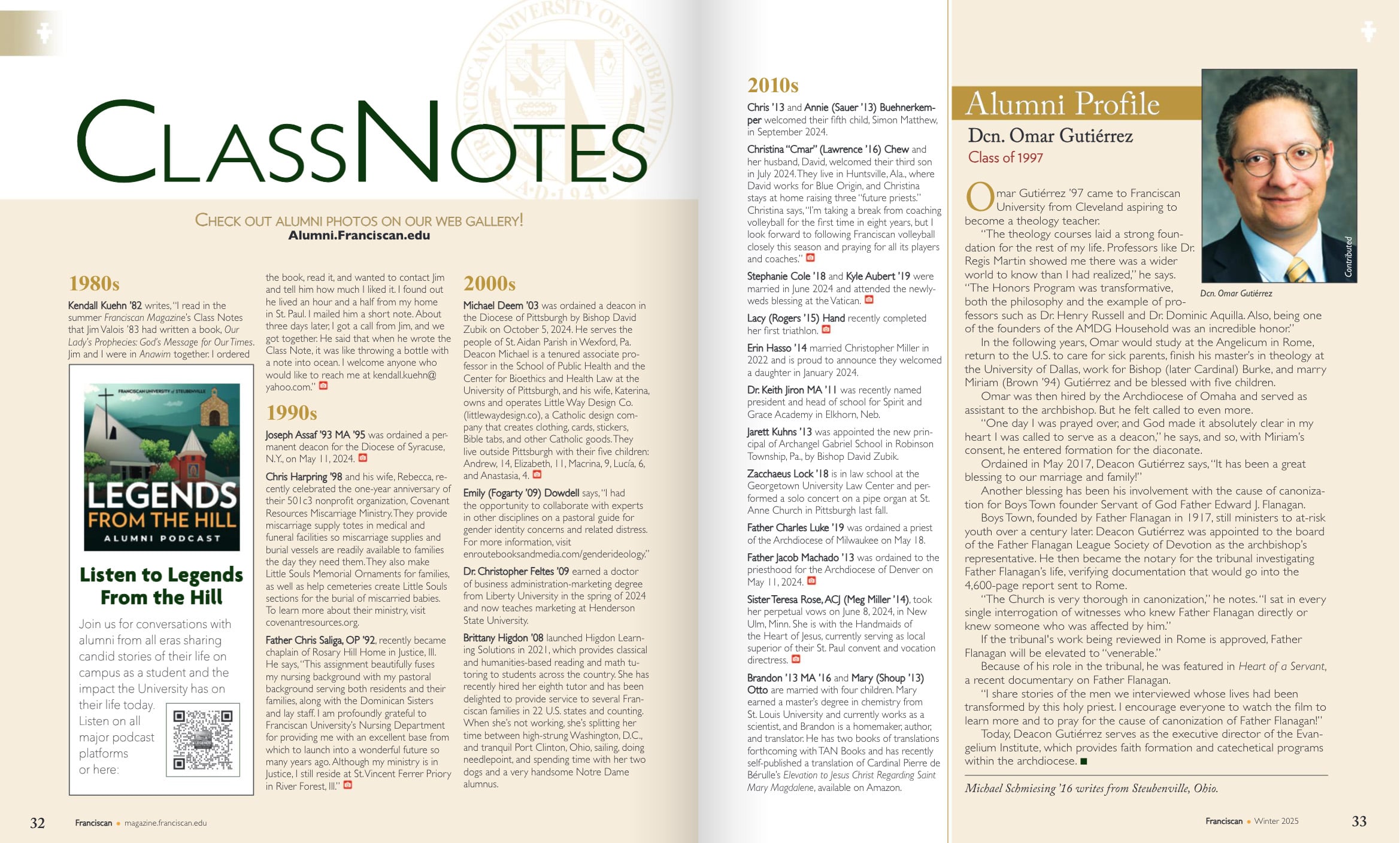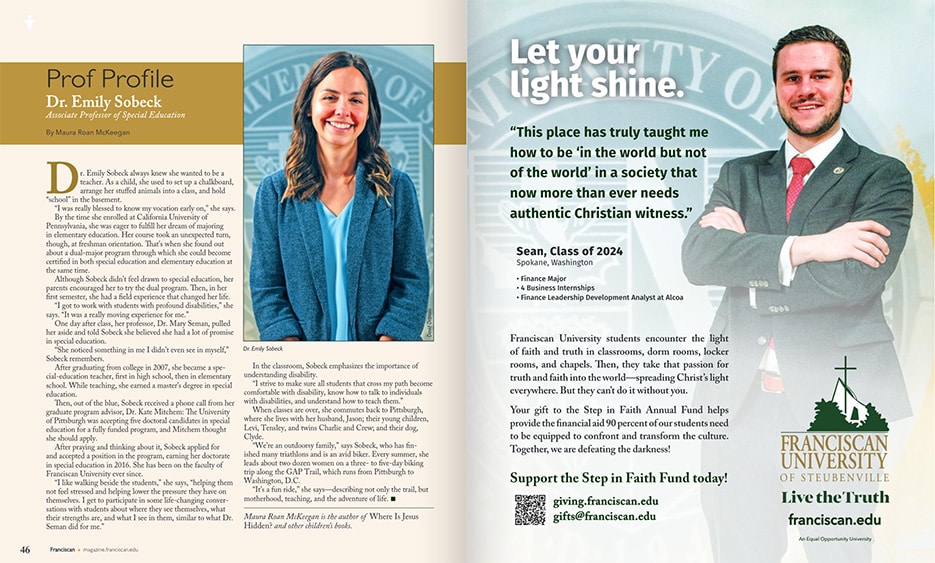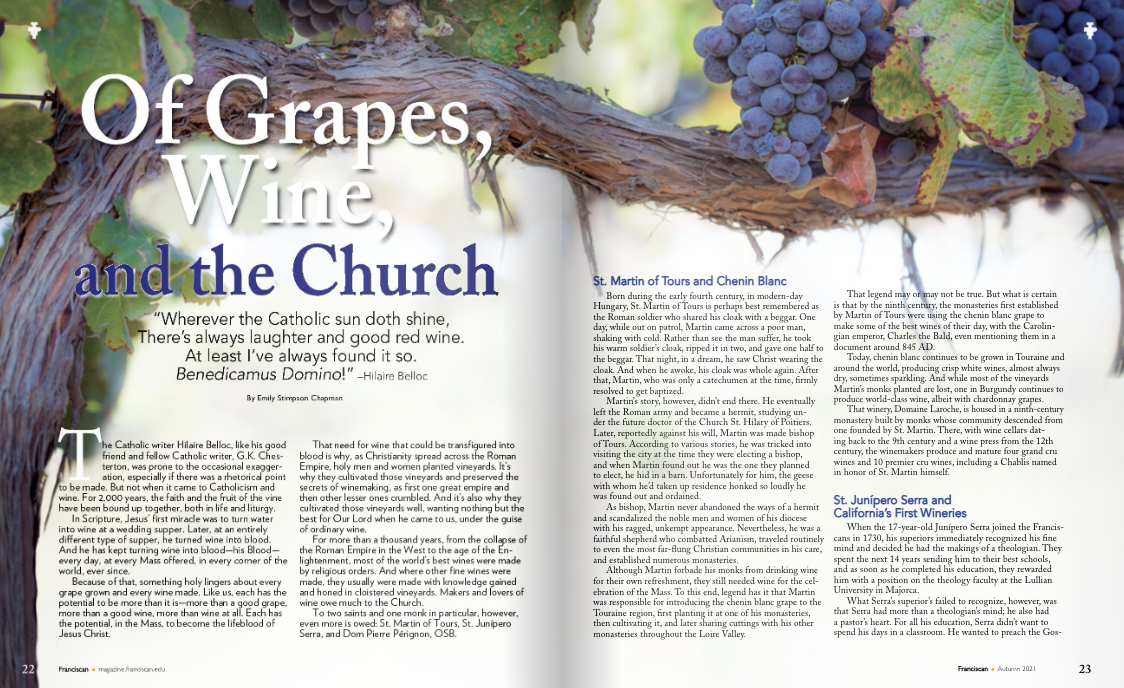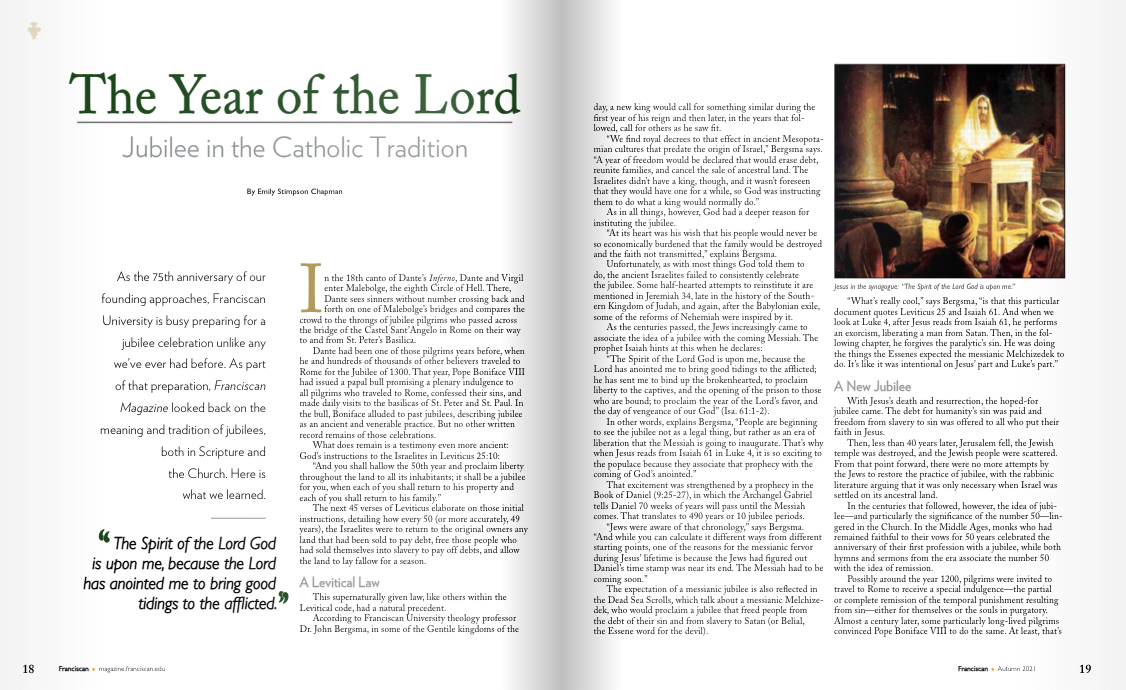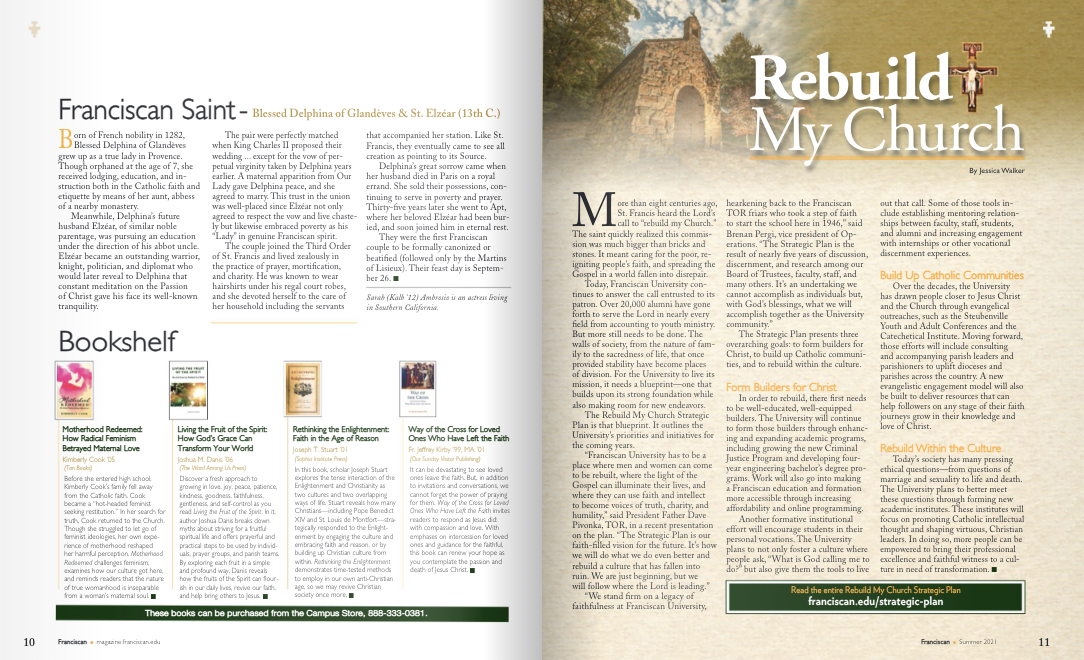Who is man, and who is woman? For too many, cultural confusion has obscured the truth of God’s design.
To bring clarity to this question, expert speakers and panelists spoke at Franciscan University during the Man and Woman in the Order of Creation Conference on October 24–26, 2024. Cosponsored by the Ethics and Public Policy Center (EPPC) of Washington, D.C., the conference explored the human person created male and female through the lens of several disciplines: biology, neuroscience, metaphysics, theology, and psychology.
“The Church puts the question very simply: Why did God make us male and female? And what are the implications of that decision?” said Dr. Deborah Savage, conference organizer and Franciscan University theology professor whose primary research area is the nature of man and woman. “At the heart of these proceedings is the conviction that what is needed is a coherent and robust scientifically, philosophically, and theologically grounded account of the nature of man and woman, both in themselves and in relation to one another.”
Being Human
Before asking who is man and who is woman, the most fundamental question is: What does it mean to be human?
“Each of us is the work of God’s hands. He made each of us as a unique, living, thinking being with a unique place and purpose in the world,” said Francis Maier, EPPC senior fellow in the Catholic Studies Program, in the conference’s opening talk. “God loves each of us in a singular and unlimited way. That means all of us … have a sanctity of life and an inherent God-given dignity that can’t be measured or diminished by any kind of human calculus.”
This uniqueness, Maier said, does not mean people should be independent from one another, as our modern individualistic and materialistic culture preaches. Rather, our need for mutual support is hardwired into our design.
“That complementarity of man and woman, that unity of differing mind and body, is fundamental to the human experience,” he said. “We are not human without it.”
Dr. John Finley, philosophy professor at Thomas Aquinas College, continued these thoughts in his lecture on the human person as a microcosm of creation.
“Creation itself is both one and many. It is, on the one hand, the greatest unity, the ordered whole of reality imaging the one transcendent God,” Finley said. “At the same time, creation is the greatest plurality, containing all beings in their relations and complexities, thus offering testimony to God’s infinite fecundity, artistic power, and wisdom.”
For humans, this creation especially shines through us as both body and soul. To separate one from the other is to deny this reality.
“To speak of the human as microcosm means that, in our unity, we display both the spiritual and the material at once,” Finley said. “We are one thing: a spiritualized body or an embodied spirit.”
The Two Sexes
Man and woman are equally human but distinct. At a biological level, this distinction comes through their roles in reproduction. But that’s not all.
Dr. Aaron Kheriaty, a physician who specializes in psychiatry and the director of the EPPC Program in Bioethics and American Democracy, said differences run throughout our biology and, “aside from our reproductive organs, the most sexually differentiated organ in the human body is the brain”—meaning men and women interpret the world through different experiences of senses, emotions, and even how they store and retrieve memories.
That’s not to say men’s and women’s personalities are completely divorced from one another. Kheriaty highlighted how sex-specific personality traits exist on a bell curve with overlap. For example, a man might display more traditionally feminine traits when compared to other men. However, that variation does not diminish his innate maleness.
“One mistake that contemporary gender theory or gender ideology makes is the notion that a man with some characteristically feminine traits or interests is really a woman trapped in a man’s body, and vice versa. That is not true,” he said. “He may be a boy who likes ballet, or she may be a girl who likes football. That’s all. A failure to acknowledge the full extent of this variation and overlap in gender traits results in overly rigid cultural stereotypes in what it means to be a man and what it means to be a woman.”
Briefly talking about what are often called intersex conditions, Kheriaty noted that, in the same way someone with a vision impairment does not undermine the fact that humans are naturally designed to see, so too someone with a physical disorder in his or her sexual development and reproductive organs does not undermine the duality of the sexes.
And what about the rising cases of gender dysphoria—an inner sense of disharmony with one’s sex?
“Gender dysphoria is a real phenomenon,” he said. These people “suffer distress and deserve compassionate care, but they deserve care that actually helps them, not harms them.
“Even for cases of gender dysphoria that manifest early in childhood, there’s no credible scientific evidence that people suffering from these conditions were somehow ‘born in the wrong body,’” Kheriaty said. Many of today’s cases are, “in a large part, conditioned by social and cultural factors,” and compassionate care therefore prioritizes treating the mental distress over physical treatment.



